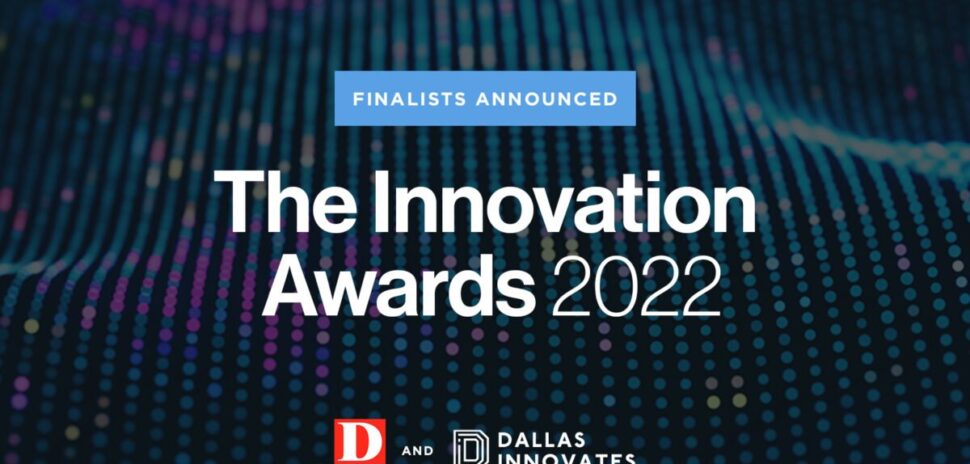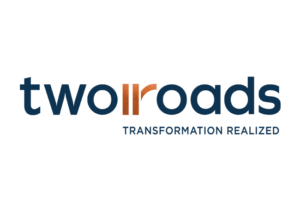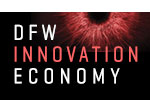
SERIES: PART 3
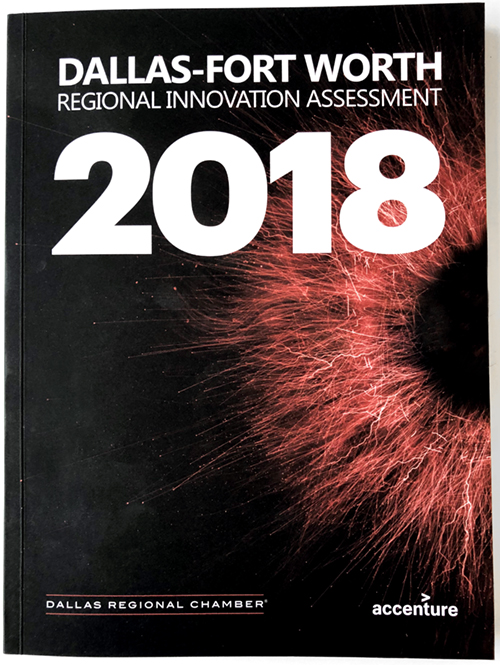
The Dallas-Fort Worth Regional Innovation Assessment 2018
DFW Innovation Economy is a serial look at chapters from the 2018 Innovation Assessment produced by the Dallas Regional Chamber (DRC) and Accenture. Each chapter of the Assessment comprises key metrics that can be tracked over time to evaluate the strength of Dallas-Fort Worth’s innovation economy in relation to competitor metropolitan areas. Measures related to patent production, venture capital flows, educational attainment, business climate and various metropolitan rankings help to paint a picture of innovation-driven economic growth potential of DFW.
In this third installment about the drivers of an innovation economy, we look at knowledge as an indicator of regional attractiveness.
Innovation is powered by the quest for knowledge and the capacity to apply that knowledge in new and useful ways. Closely associated with knowledge is the attainment of a formal education. The impact on lifetime earnings of obtaining advanced levels of education has been well documented. However, the current rate of technological change, coupled with the demands of an innovation economy, will require future workers to continuously improve their knowledge and to apply it adaptively to changing conditions. Here, we look at the educational opportunities and attainment in DFW.
TO A DEGREE
Investment in education not only contributes to the earning potential of the individual, but also to the overall economic growth of a region. According to the Organization for Economic Co-operation and Development, 43 percent of adult Americans have a post-secondary education, but the distribution of degreed talent is disproportionately weighted toward metros. Even among metros, the concentration of highly educated talent can vary. Small university metros like Boulder, where 59 percent of the population has a bachelor’s degree or higher, contrast with sprawling metros like Riverside, where only 20 percent possess a bachelor’s or advanced degree.
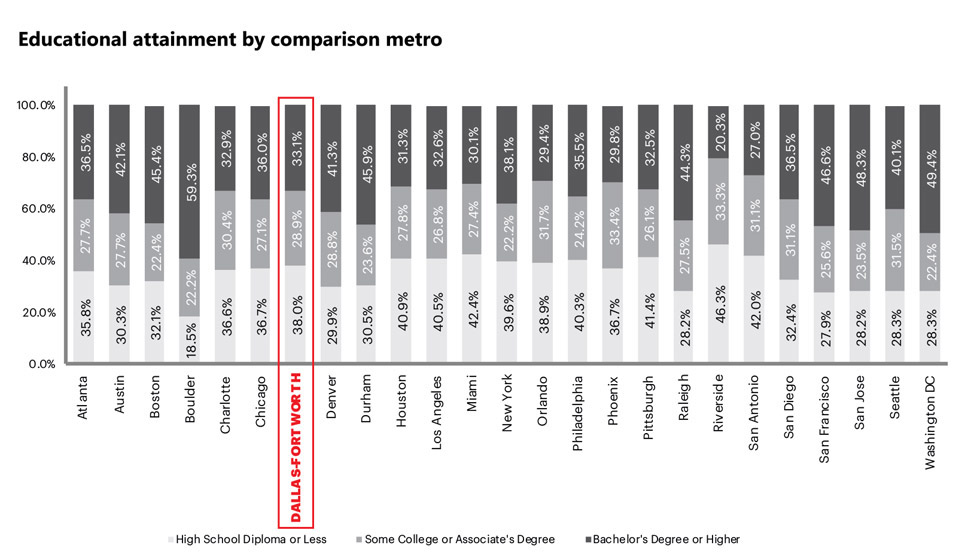
Source: American Community Survey 5-Year Estimates, US Census Bureau, 2012– 2016.
Note: Percent of population ages 25 and above.
PREPARED TO ADVANCE
Standardized tests attempt to measure college readiness and predict academic success. Although public debate over the effectiveness of such tests continues, most colleges use standardized test scores to assist in the admissions decision process. While the two predominant tests—the SAT and the ACT—measure different aspects of a student’s aptitude, performance in the aggregate can be a powerful indicator of how well a state education system prepares its high school students for higher learning.

Source: The College Board and ACT Inc., 2017.
QUALITY OF INSTRUCTION
Every year, US News & World Report compiles data on universities throughout the country to determine which are the best performing. The top 100 universities rate highly in one or more of the following categories: first-year student retention rates, assessment by administrators at peer institutions, faculty resources, admissions selectivity, financial resources and alumni giving, and graduation rate performance. The greater the concentration of top-rated universities within a region, the greater the opportunity for retaining and attracting the brightest minds and possibly future innovators.

Source: US News & World Report, 2018.
STEM HITS THE MAINSTREAM
In a global economy increasingly defined by technological innovations, the skills demanded by the labor market are changing. This new reality has thrust the sciences and related disciplines into the mainstream. A 2015 study published in Science Magazine found that recipients of doctorates in all science fields disproportionately gained placements in large, high-wage private businesses. Those who remain in academia typically engage in research that pushes the boundaries of human knowledge and holds commercialization potential. The concentration of Ph.D. recipients in science, technology, engineering and mathematics — or STEM disciplines — can have an enormous impact on regional innovation potential.
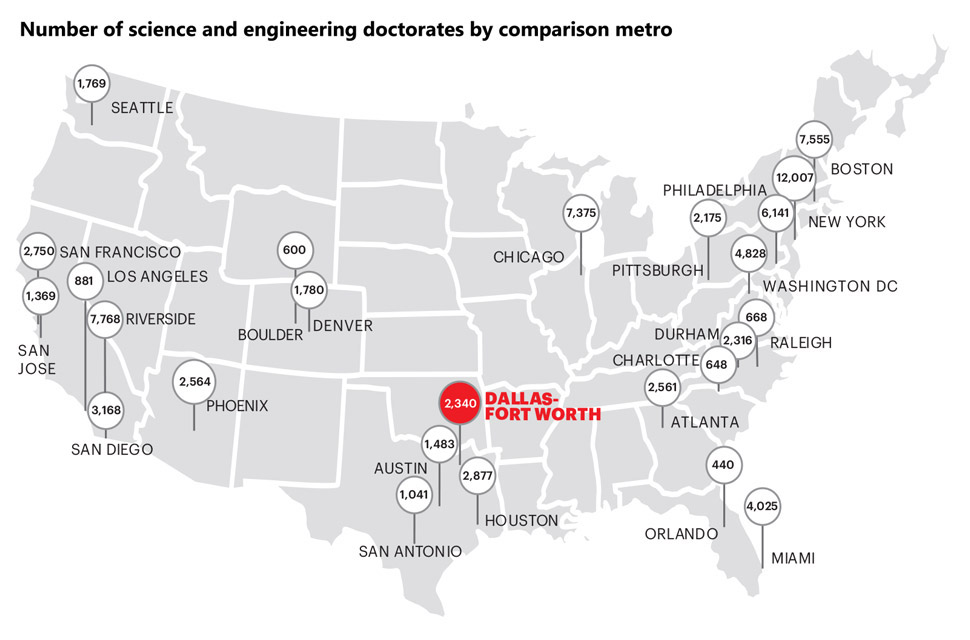
Source: EMSI, 2016.
READ NEXT
PART 1: DFW INNOVATION ECONOMY
Metropolitan Rankings from Trustworthy Sources
Part one captures how experts position DFW as a center for innovation. See how DFW stacks up in a Scorecard that benchmarks our rankings against peer cities.
PART 2: DFW INNOVATION ECONOMY
People Power
Part two in our innovation economy series highlights population growth and talent attraction as a first look at regional innovation potential. Here’s how DFW stacks up.
![]()
Get on the list.
Dallas Innovates, every day.
Sign up to keep your eye on what’s new and next in Dallas-Fort Worth, every day.
![]()




